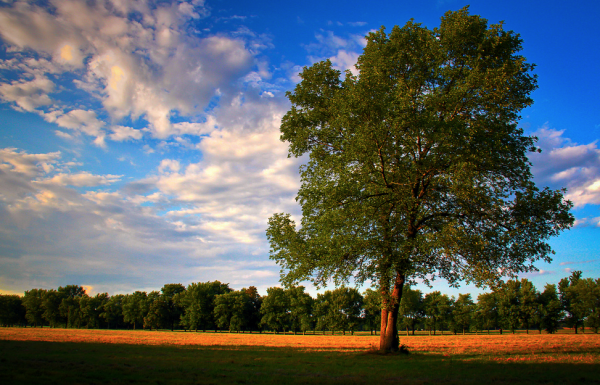Longtime Texas residents and new arrivals both face challenges when deciding how to best landscape their yards with trees. Trees offer shade to reduce home energy costs as well as beauty to enhance both the enjoyment and value of your property. However, Texas is a challenging environment and planting the right tree at the right time for your situation is the critical step for success.

When to Get Started
One critical step in adding trees to your landscape is to decide when to plant. The best time to plant trees tends to be in the fall when the temperature is moderate and there is possibility of rain. If you wait until summer, you will battle heat and drought stress; many trees have been lost to such stress. Planting in the fall or winter means the tree develops roots and gets established before facing the brutal Texas summer. In fact, in recognition of the fall planting season, Texas celebrates Arbor Day on the first Friday of November.
Pick Your Tree
A second important step is, of course, selecting the type of tree to plant. Most experts recommend trees that are drought and heat tolerant. The Texas summer can be brutally hot so it is important to plan accordingly. While there are a number of tree varieties to choose from, the most recommended include Cedar Elm, Chinese Pistache, Monterey Oak, Shumard Red Oak, and Live Oak.
Oaks can pose maintenance issues if improperly planted; make sure that large oaks are not placed too close to the house. You want to enjoy the tree shade, but not spend excessive time and effort trimming limbs away from your roof!
The trees listed above are tolerant to heat and drought, especially once they are established. Other varieties to consider include Althea (also known as Rose of Sharon) which flowers beautifully and can take full sun; Bird of Paradise, a smaller tree with large yellow flowers; and the decorative trees known as hollies which come in various sizes and with females producing red berries.
Find the Perfect Spot then Dig
Once you have the tree selected, it is time to plant. Pick your tree’s new home and then dig a hole and fill with water. Leave the water for an hour to see if it has drained. Trees need adequate drainage so if the water is still in the hole, you will need to find another spot or develop a raised bed with drainage.
Prepare the Tree
The next step is to remove the tree from its nursery wrapping or pot. Place the roots in a big bucket of water until they are saturated. Next, examine the roots and make sure they are not covered with soil or encircling the trunk of the tree. Once the tree is prepped, you can set it in the hole and add a little native soil if needed to bring it level so that the root flair is sitting just above the surface of the soil.
Use the soil you dug out of the hole and avoid using amended soil. Finally, water the soil and, if the soil settles, add a little more on top. For complicated, large trees, it may be best to consult a professional arborist.
Voila! You have added a beautiful tree to your home and you can enjoy it for many years to come. In all cases, the best avenue for success is to select the right tree for the right space.
Miles Lefler is a certified arborist and spends his work time consulting with people about caring for their landscape and home gardens. Maintaining your Texas tree during the summer can be difficult especially during the drought season, but Miles has a few tips to keep your trees happy all year round.
